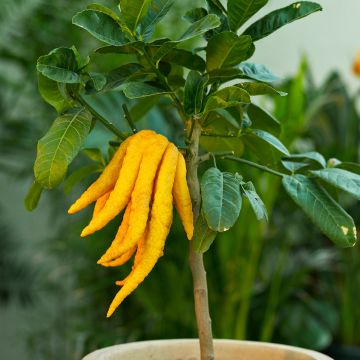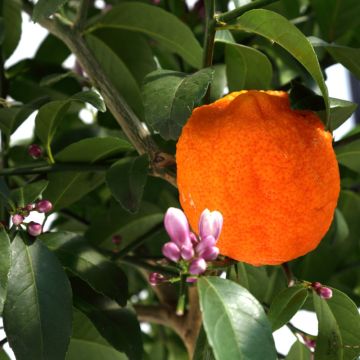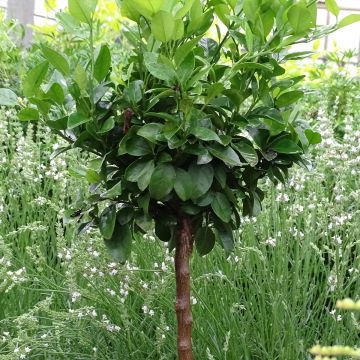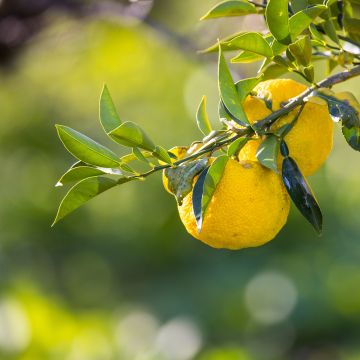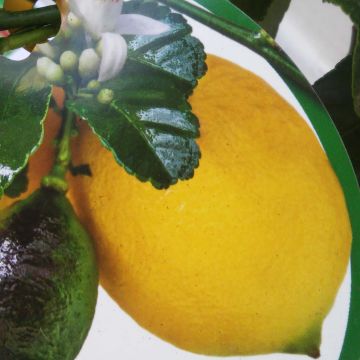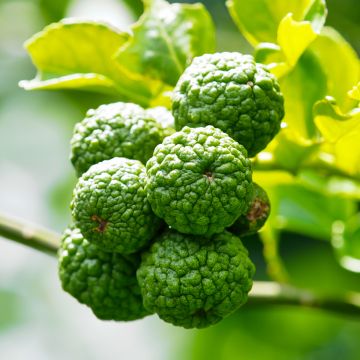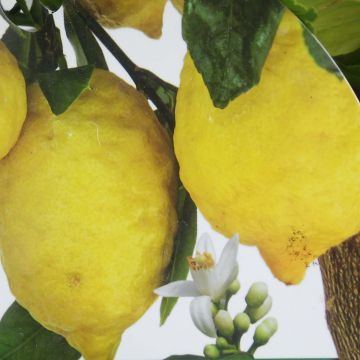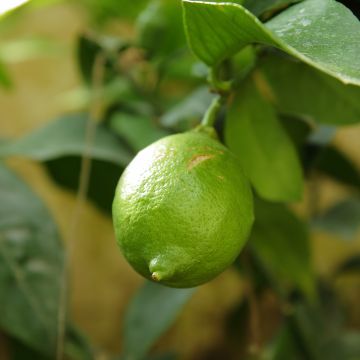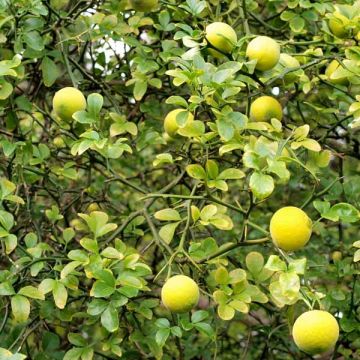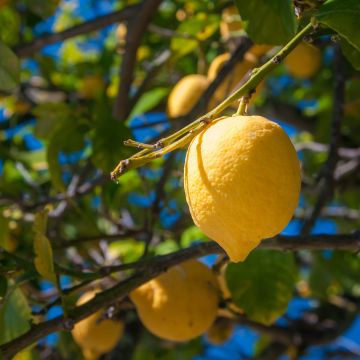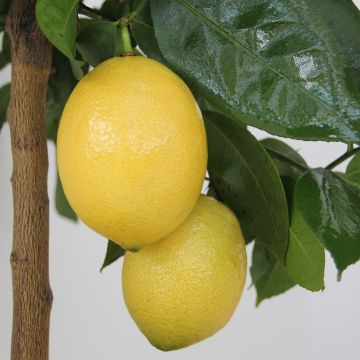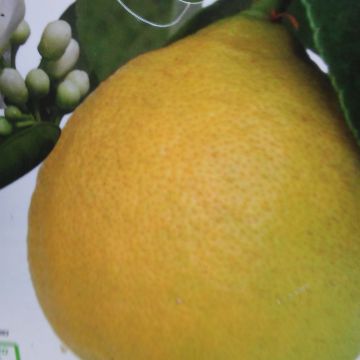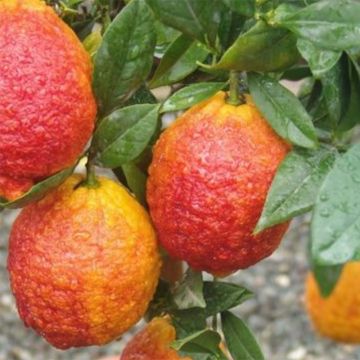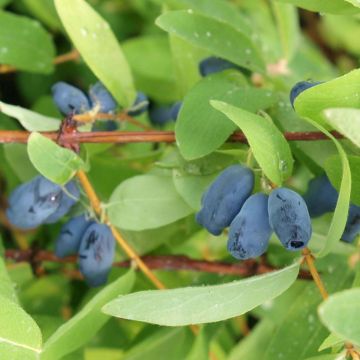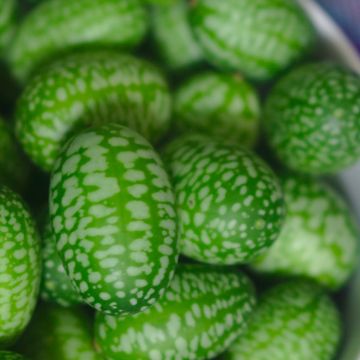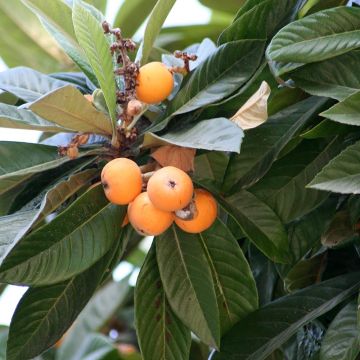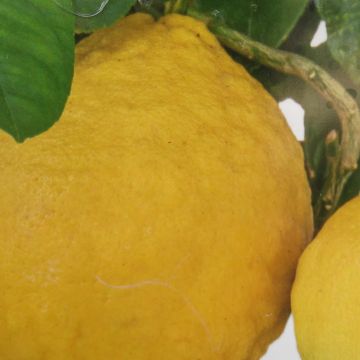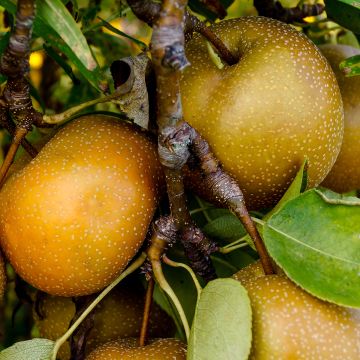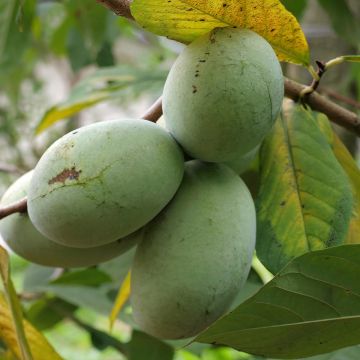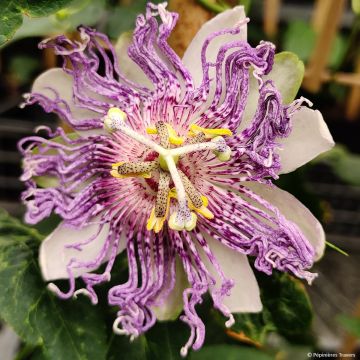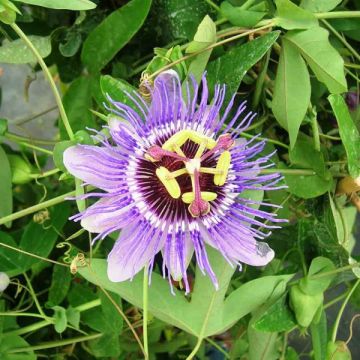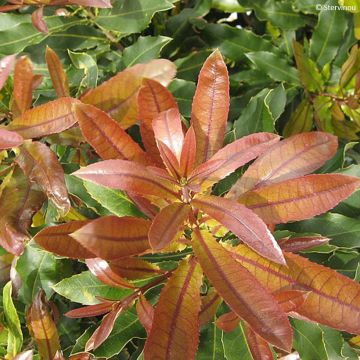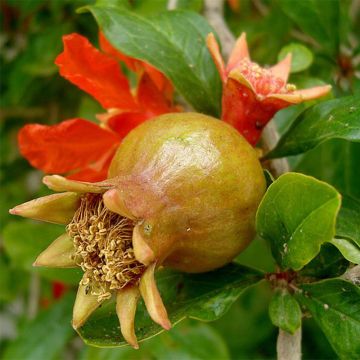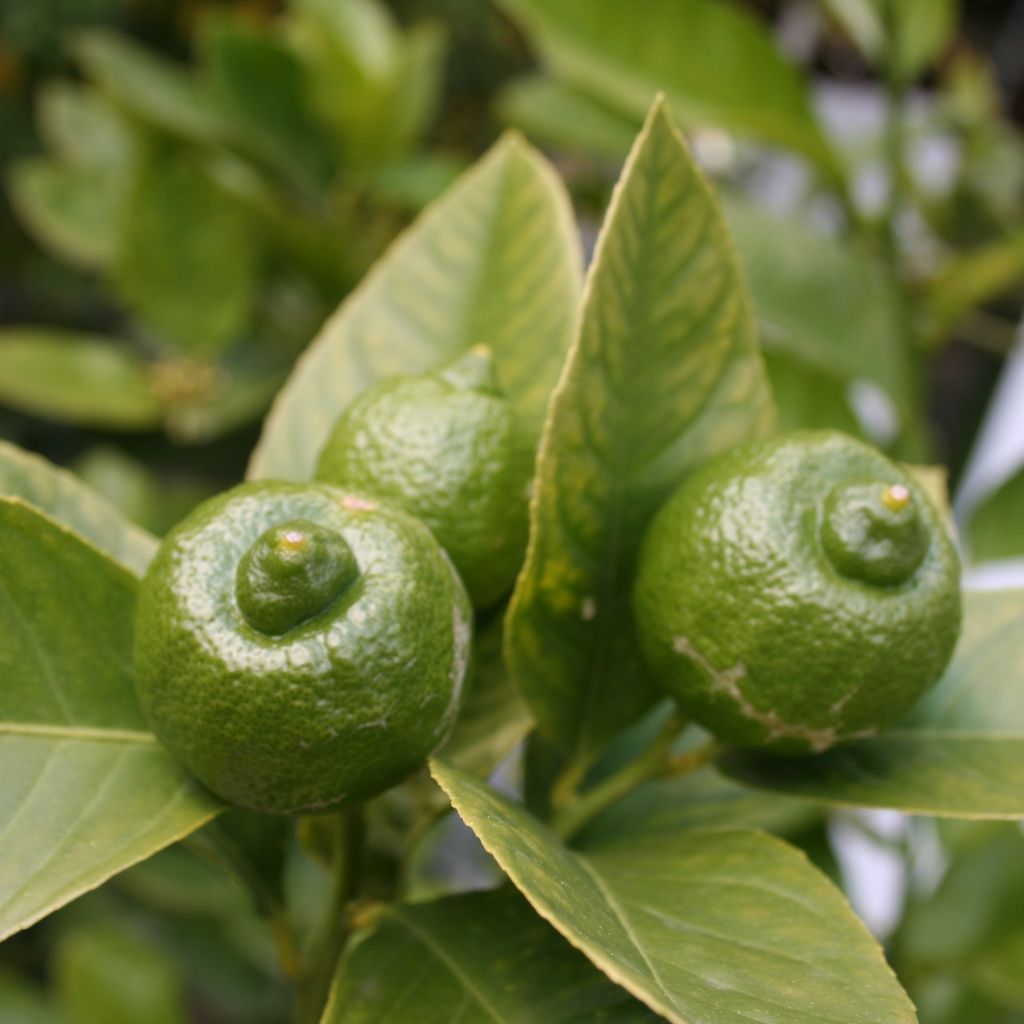

Citrus x aurantiifolia 'Mexican'
Citrus x aurantiifolia 'Mexican'
Citrus x aurantiifolia Mexicana
Key lime, Mexican lime, West Indian lime
Only 1L was actually rooted, even though it was sold in a 3L pot. Overall, it feels like I bought potting soil... It's quite cheeky at that price.
Tristan, 20/12/2021
Why not try an alternative variety in stock?
View all →This plant carries a 6 months recovery warranty
More information
We guarantee the quality of our plants for a full growing cycle, and will replace at our expense any plant that fails to recover under normal climatic and planting conditions.
From €5.90 for pickup delivery and €6.90 for home delivery
Express home delivery from €8.90.
Delivery to Corse prohibited: UE law prohibits the import of this plant from mainland France to Corse as part of the fight against Xylella fastidiosa. Please accept our sincere apologies.
More information
Description
The Lime tree or Mexican Lime, in Latin Citrus aurantiifolia, is a moderately vigorous citrus tree, with a well-branched and highly floriferous habit in spring. Its small, pleasantly scented white star-shaped flowers are followed by small, more or less spherical fruits covered with a smooth and thin skin. The pulp of this citrus fruit is very juicy, particularly acidic but highly aromatic, when the skin turns yellow. This variety, the least hardy of all citrus trees, has very specific tropical requirements: it perishes below -3°C (26.6°F) and requires warmth throughout the year to fruit well. It can be cultivated in a large container and stored in a slightly heated greenhouse in winter, or in open ground in warm regions that are spared from frost.
Citrus aurantifolia is also known as Acid Lime, Country Lime, Pebble Lime, Mexican Lime or even West Indian Lime depending on the region. It is a spiny bush from the Rutaceae family, with a rather upright and bushy habit. It is likely native to Southeast Asia, specifically Malaysia and the Philippines, but its exact origin is somewhat unclear. Recent studies suggest a hybrid origin between Citrus medica (the citron) and C. micrantha (a small wild lime from the Philippines). The 'Mexican' selection produces remarkably fragrant small fruits.
This small tree reaches a height of 3.50m (11ft). Its branches are short and bear numerous short and sharp thorns. Not very hardy, it can be planted in open ground on a narrow stretch of the Mediterranean coast, in non-calcareous soil only. Elsewhere, it should be cultivated in a pot and stored at the onset of the first frosts. Primarily grown for its fruits, the lime tree blooms abundantly in March-April, and then again, more sporadically, until autumn in a Mediterranean climate. It produces small white flowers, slightly tinged with yellow at the centre and with a sweet and delicious neroli fragrance, characteristic of Citrus. These give way to oval to round fruits, resembling yellow lemons, measuring 3 to 5cm (1 to 2in) in diameter. Their very thin and smooth skin is initially dark green, then turns green-yellow. The fruit's pulp, white-greenish and translucent, is both very juicy and very acidic, and contains a few seeds. The fruits are harvested when they start to turn yellow, at the peak of their essential oil content. The evergreen and aromatic leaves of this citrus tree are ovate, leathery, small, and intensely green in colour.
Limes are part of the culinary traditions of several Southeast Asian countries, as well as Reunion Island and the Caribbean. Their use is almost as widespread as that of yellow lemons, in savoury or sweet dishes. The juice is used in refreshing drinks or cocktails, adding a touch of acidity and a unique aroma. The zest is sometimes used to flavour pastries. With a bit of chili, the lime is often served with Reunionese dishes and Caribbean ti-punch cocktails. In addition to its culinary importance, the Lime tree is also a medicinal plant whose therapeutic properties, used for centuries in traditional medicine, are now the subject of in-depth scientific studies. Limes are less rich in ascorbic acid (Vitamin C), as well as vitamins A and B, compared to lemons. Easy to store, this citrus fruit was once embarked on sailing ships, providing a good source of vitamins to fight scurvy.
Like all Citrus trees, the Mexican Lime tree contains essential oil pockets in its leaves, flowers, and fruits, often visible to the naked eye. These can be extracted through distillation (flowers and leaves) or pressing (zest) to obtain essential oil with rebalancing properties, slightly sedative, that help realign vital energies. Stimulating, the essential oil is known to facilitate blood circulation. The fragrance of the essential oil is described as fresh, lemony, tangy, with slightly sweet and bitter notes.
Most citrus trees thrive in open ground in Mediterranean coastal regions where they find the necessary warmth all year round. But to fruit well, they require an adequate supply of water and nutrients. The Mexican Lime is self-fertile, meaning that a single individual is sufficient for complete pollination and fruiting.
Report an error about the product description
Plant habit
Fruit
Flowering
Foliage
Botanical data
Citrus
x aurantiifolia
Mexicana
Rutaceae
Key lime, Mexican lime, West Indian lime
Southeast Asia
Other Lemon trees
Planting and care
Planting in open ground: The Lime appreciates neutral, slightly acidic, non-limestone soils. It is only reasonable to plant it in open ground if you reside on a highly favoured Mediterranean coastal strip (or in Corsica), spared from frost, as the hardiness of this citrus tree does not exceed -3°C (26.6°F) and it needs a lot of heat to flower and bear fruit. The best time to plant is in early spring, in March and April. Be careful not to bury the collar. Citrus trees are naturally greedy and require water to bear fruit well: in all cases, consider amending with well-decomposed compost or with "special citrus" fertilizer. Choose a sunny but not scorching location for your bush, in a sheltered spot to prevent the foliage from drying out and the young fruits from falling off. Place it in a location protected from sea spray.
Planting in a pot: In all other regions, the Lime will be planted in a pot that you can keep in a slightly heated greenhouse or conservatory, frost-free, in an atmosphere that is not too dry. It will appreciate being outdoors in summer. Planting in a pot or repotting takes place in late summer. Choose a pot slightly larger than the root system, as citrus trees do not like to feel cramped. Moisten the root ball well. To increase the drainage capacity of the mixture, line the bottom of the pot with clay balls. Loosen the root ball and mix two-thirds garden soil with one-third of "special citrus" compost. Water thoroughly. Prefer pots made of terracotta or breathable material.
Citrus trees need a lot of water to thrive. Your citrus tree should be watered daily with water that is low in or free from limestone, and the soil should remain moist at all times. Similarly, make sure to regularly provide it with the fertilizer it needs: every 6 months for slow-release granular fertilizer or every 3 waterings for liquid fertilizer.
Planting period
Intended location
Care
-
, onOrder confirmed
Reply from on Promesse de fleurs
Unusual and exotic fruit trees
Haven't found what you were looking for?
Hardiness is the lowest winter temperature a plant can endure without suffering serious damage or even dying. However, hardiness is affected by location (a sheltered area, such as a patio), protection (winter cover) and soil type (hardiness is improved by well-drained soil).

Photo Sharing Terms & Conditions
In order to encourage gardeners to interact and share their experiences, Promesse de fleurs offers various media enabling content to be uploaded onto its Site - in particular via the ‘Photo sharing’ module.
The User agrees to refrain from:
- Posting any content that is illegal, prejudicial, insulting, racist, inciteful to hatred, revisionist, contrary to public decency, that infringes on privacy or on the privacy rights of third parties, in particular the publicity rights of persons and goods, intellectual property rights, or the right to privacy.
- Submitting content on behalf of a third party;
- Impersonate the identity of a third party and/or publish any personal information about a third party;
In general, the User undertakes to refrain from any unethical behaviour.
All Content (in particular text, comments, files, images, photos, videos, creative works, etc.), which may be subject to property or intellectual property rights, image or other private rights, shall remain the property of the User, subject to the limited rights granted by the terms of the licence granted by Promesse de fleurs as stated below. Users are at liberty to publish or not to publish such Content on the Site, notably via the ‘Photo Sharing’ facility, and accept that this Content shall be made public and freely accessible, notably on the Internet.
Users further acknowledge, undertake to have ,and guarantee that they hold all necessary rights and permissions to publish such material on the Site, in particular with regard to the legislation in force pertaining to any privacy, property, intellectual property, image, or contractual rights, or rights of any other nature. By publishing such Content on the Site, Users acknowledge accepting full liability as publishers of the Content within the meaning of the law, and grant Promesse de fleurs, free of charge, an inclusive, worldwide licence for the said Content for the entire duration of its publication, including all reproduction, representation, up/downloading, displaying, performing, transmission, and storage rights.
Users also grant permission for their name to be linked to the Content and accept that this link may not always be made available.
By engaging in posting material, Users consent to their Content becoming automatically accessible on the Internet, in particular on other sites and/or blogs and/or web pages of the Promesse de fleurs site, including in particular social pages and the Promesse de fleurs catalogue.
Users may secure the removal of entrusted content free of charge by issuing a simple request via our contact form.
The flowering period indicated on our website applies to countries and regions located in USDA zone 8 (France, the United Kingdom, Ireland, the Netherlands, etc.)
It will vary according to where you live:
- In zones 9 to 10 (Italy, Spain, Greece, etc.), flowering will occur about 2 to 4 weeks earlier.
- In zones 6 to 7 (Germany, Poland, Slovenia, and lower mountainous regions), flowering will be delayed by 2 to 3 weeks.
- In zone 5 (Central Europe, Scandinavia), blooming will be delayed by 3 to 5 weeks.
In temperate climates, pruning of spring-flowering shrubs (forsythia, spireas, etc.) should be done just after flowering.
Pruning of summer-flowering shrubs (Indian Lilac, Perovskia, etc.) can be done in winter or spring.
In cold regions as well as with frost-sensitive plants, avoid pruning too early when severe frosts may still occur.
The planting period indicated on our website applies to countries and regions located in USDA zone 8 (France, United Kingdom, Ireland, Netherlands).
It will vary according to where you live:
- In Mediterranean zones (Marseille, Madrid, Milan, etc.), autumn and winter are the best planting periods.
- In continental zones (Strasbourg, Munich, Vienna, etc.), delay planting by 2 to 3 weeks in spring and bring it forward by 2 to 4 weeks in autumn.
- In mountainous regions (the Alps, Pyrenees, Carpathians, etc.), it is best to plant in late spring (May-June) or late summer (August-September).
The harvesting period indicated on our website applies to countries and regions in USDA zone 8 (France, England, Ireland, the Netherlands).
In colder areas (Scandinavia, Poland, Austria...) fruit and vegetable harvests are likely to be delayed by 3-4 weeks.
In warmer areas (Italy, Spain, Greece, etc.), harvesting will probably take place earlier, depending on weather conditions.
The sowing periods indicated on our website apply to countries and regions within USDA Zone 8 (France, UK, Ireland, Netherlands).
In colder areas (Scandinavia, Poland, Austria...), delay any outdoor sowing by 3-4 weeks, or sow under glass.
In warmer climes (Italy, Spain, Greece, etc.), bring outdoor sowing forward by a few weeks.

































